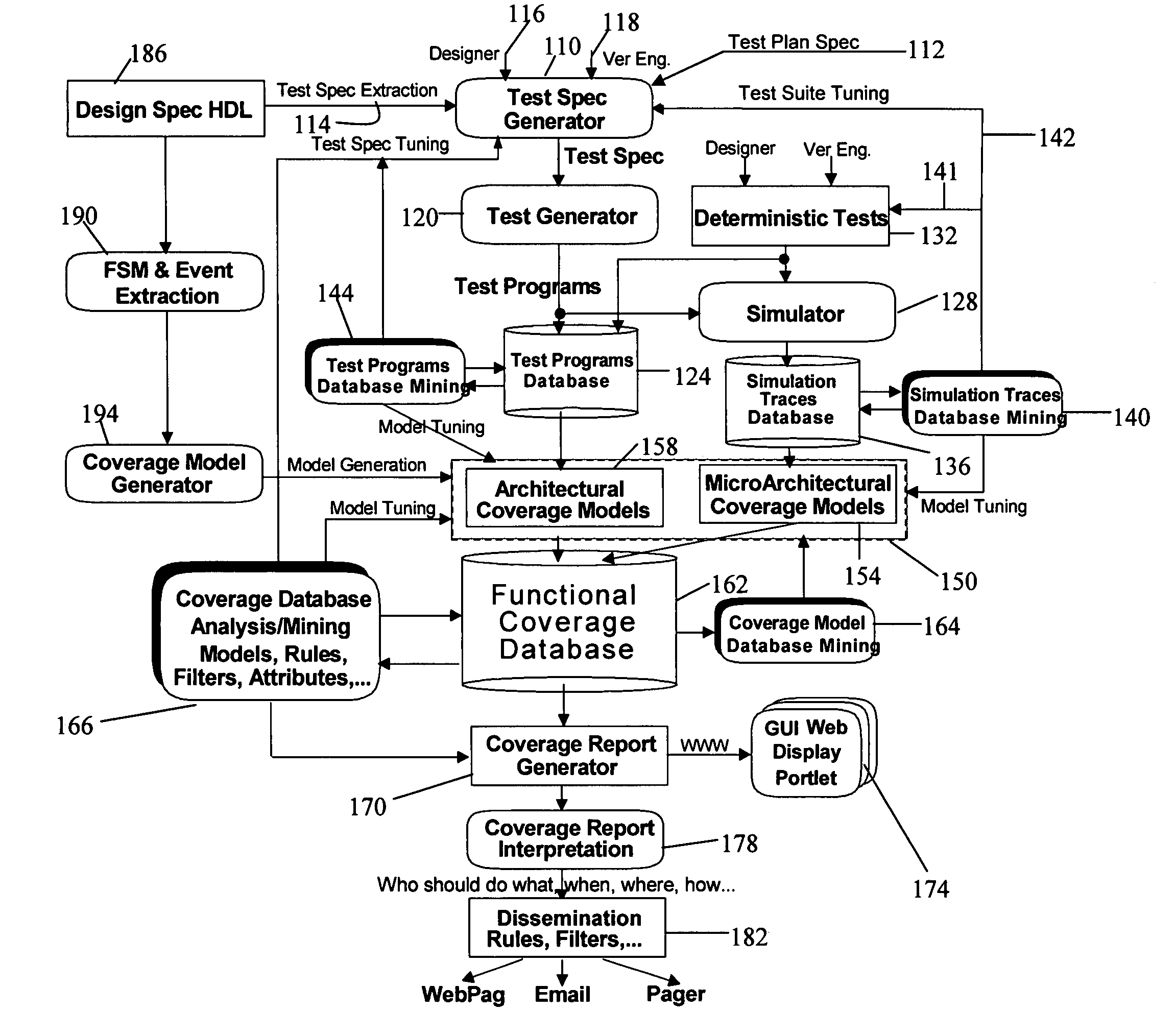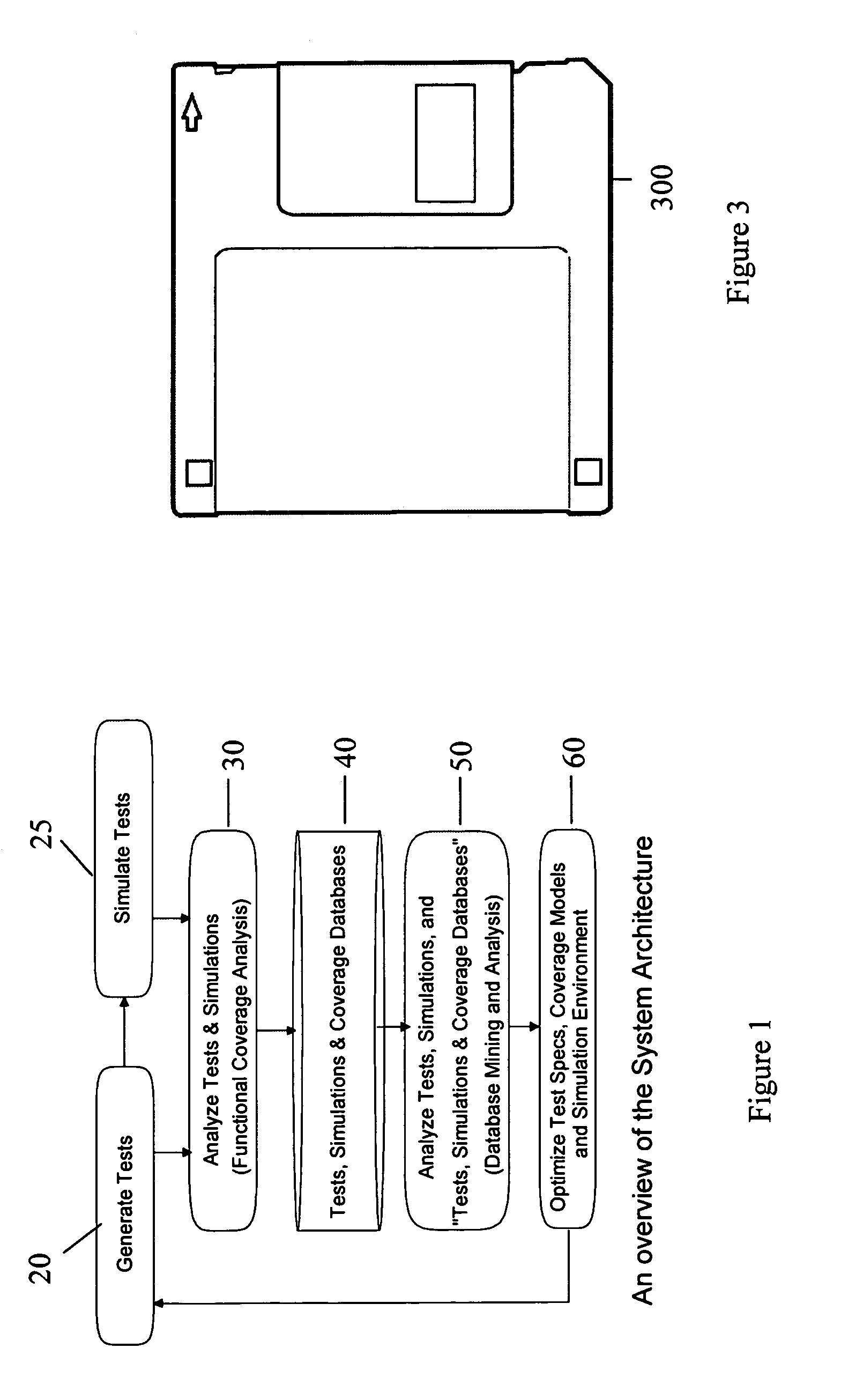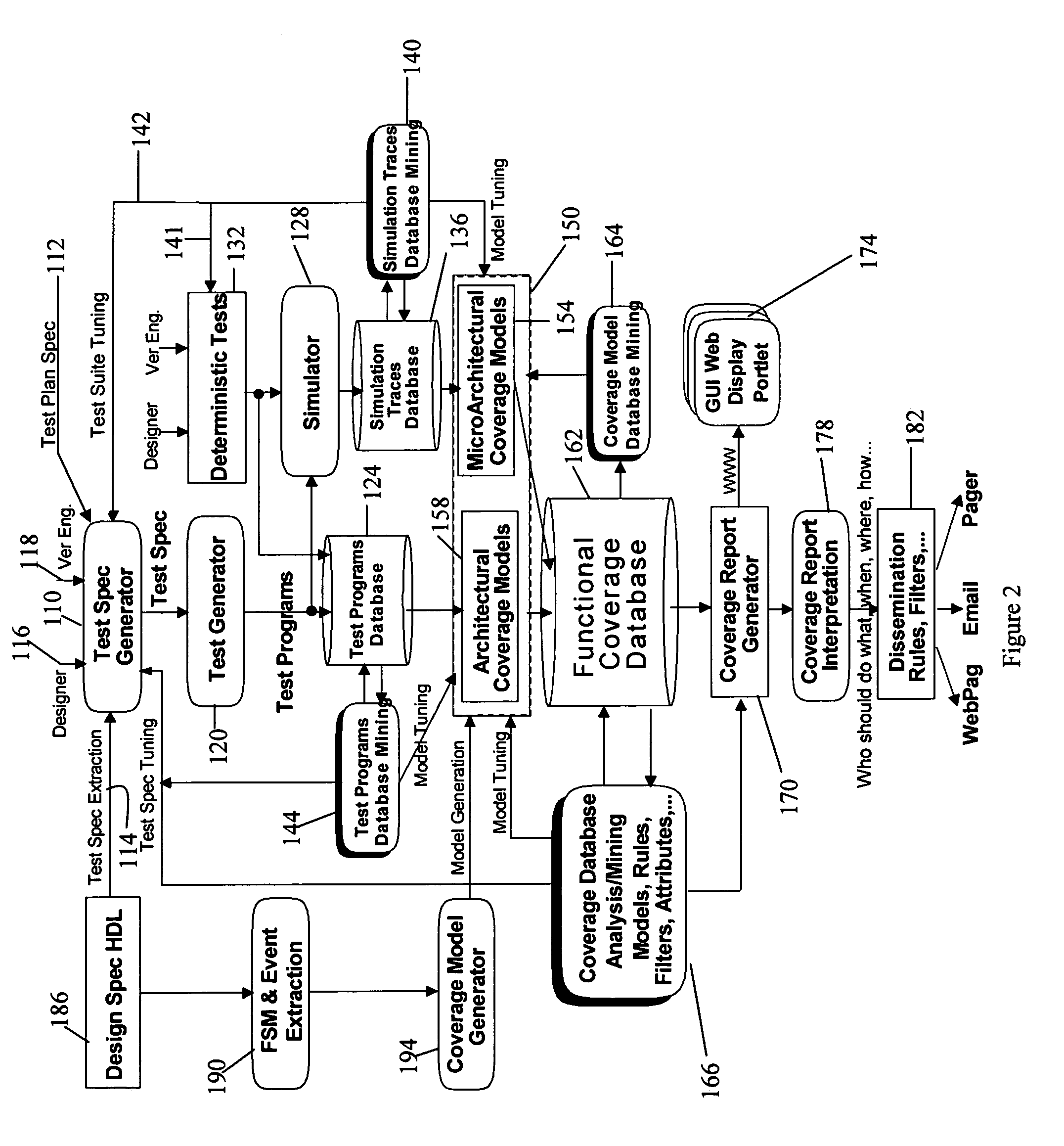Database mining system and method for coverage analysis of functional verification of integrated circuit designs
- Summary
- Abstract
- Description
- Claims
- Application Information
AI Technical Summary
Benefits of technology
Problems solved by technology
Method used
Image
Examples
Embodiment Construction
[0035]The present invention relates to a system and a method that uses a combination of database mining algorithms and data analysis and optimization techniques such as classification and regression trees, neural networks, k-nearest neighbors, regression analysis and clustering algorithms to provide readily available and usable verification intelligence (VI). The proposed system and method turn raw data into VI and provide automatic extraction of the required data and attributes from existing verification and simulation databases—thus reducing the dependency on designers, and verification personnel. In addition to standard database mining algorithms such as classification and regression trees, neural networks, k-nearest neighbors, regression analysis and clustering algorithms, Design FSM (Finite State Machine) extraction, design event extraction, coverage model tuning and management and automatic coverage model generation techniques are utilized to extract states, events and functio...
PUM
| Property | Measurement | Unit |
|---|---|---|
| sizes | aaaaa | aaaaa |
| time | aaaaa | aaaaa |
| size | aaaaa | aaaaa |
Abstract
Description
Claims
Application Information
 Login to View More
Login to View More - R&D
- Intellectual Property
- Life Sciences
- Materials
- Tech Scout
- Unparalleled Data Quality
- Higher Quality Content
- 60% Fewer Hallucinations
Browse by: Latest US Patents, China's latest patents, Technical Efficacy Thesaurus, Application Domain, Technology Topic, Popular Technical Reports.
© 2025 PatSnap. All rights reserved.Legal|Privacy policy|Modern Slavery Act Transparency Statement|Sitemap|About US| Contact US: help@patsnap.com



